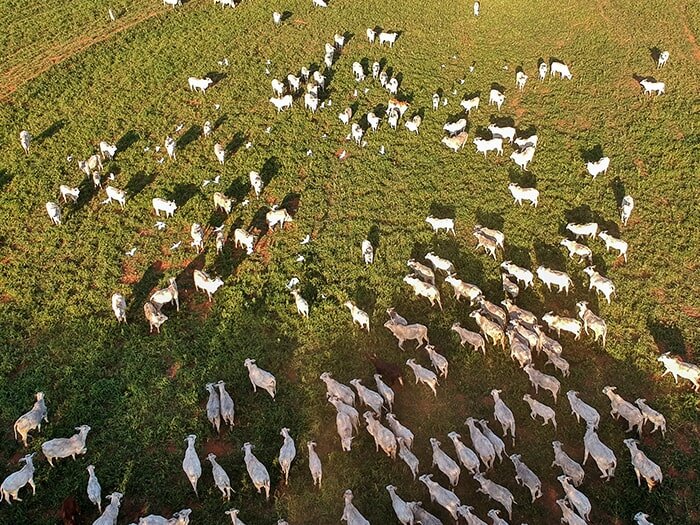When planning your electric fence, the first thing that you need to do is define your fencing needs. What sort of fence is the best option for what you need? Asking yourself important questions can help determine the type of fence you require. Here are the things that you should be asking about!



What Kind of Livestock is Contained?
One of the main factors in determining the type of fencing you need is the livestock that you intend to fence. Animal hooves, thickness and length of hair, height, and jumping ability are all factors that should be taken into consideration when selecting the fence. In some cases, an electric fence is necessary for effective containment, whereas in other cases, a simple fence that acts as a physical barrier may be adequate. Animals that have characteristically thick, shaggy coats will require a more powerful fence charger than those animals that have a sleeker coat. Conductive wires should be placed at nose level. You should also space the wire so that it doesn’t allow the animal to push its head through without getting shocked.What is the Main Function?
Electric fences are mostly used to contain livestock. But that’s not the only thing they can be used for. They can also keep animals out of a specific area. Fences that are acting as a deterrent can keep animals and livestock away from valuable crops, out of ponds, away from restricted areas, or stop predators from entering livestock pastures. Determining what the use of your fence is will help you decide what your fence needs. The fewer restrictions that you place on livestock and wildlife, the fewer wires you’ll need. If you want your fence to work both as a containment fence and a determent fence, you’ll also need to increase the number of wires you need to run.What is the Size of the Area?
Determining the size of the area that you would like to fence will likely affect what sort of fence you need for your property. Measuring your yard in acres or miles, the length the fence runs will ultimately determine the number of materials needed. This also affects the size and type of charger needed to run the fence. Be sure to consider the power source location when choosing a charger – which can either be AC-powered or solar-powered. Keep track of the number of posts you’ll be installing and using, including those that are serving as corner posts. Knowing these numbers will help you when you go to order your insulators and the other accessories and supplies for your fence.
Are You Installing a New Fence or Building On?
When you are building a new fence, you have to start completely from scratch. This will mean that you will need to do extra planning and ensure that you’ve got everything covered before investing time, effort, and money into building your fence. However, adding to an existing fence is a possible option. Specialty insulators can be added to a “hot-wire” to existing perimeter fences, including chain link fences.What is Your Soil Quality?
Paying attention to your soil quality is something that people often overlook or forget about when it comes to planning a fence installation, but it’s a key factor in determining what you need. Dry soil has a harder time conducting electricity, which delivers a weaker charge. To get the best grounding for your electric fence, you should check to make sure your soil has moisture and isn’t rocky or dry. If your soil is dry, you may need additional grounding.Is Your Fence Permanent or Temporary?
There are three different types of fencing: permanent, temporary, and semi-permanent. Depending on which sort of fence you want, it’s going to make a difference in the items you need and the installation process. Permanent fencing, like its name indicates, is the type of fencing that you plan on using in the same place for years. Permanent fencing includes solid corner posts, wire that is both extremely conductive and durable, and good quality insulators. Long fences with high-powered energizers are needed to power the fence constantly and effectively for many miles. Temporary fences are moved regularly and can be constructed with many different components. These are typically shorter fences that are only a few hundred yards in length to contain or exclude animals from a moving area. Semi-Permanent fences are designed to stay in the same place for a year or two, best used for horses, outdoor pigs, poultry, or to protect crops. Didn’t find what you were looking for? Come on down to your local Wilco Farm Store and chat with our knowledgeable and friendly staff!We would love to see your fencing projects, use #mywilcolife on Facebook, Twitter, or Instagram and tag Wilco Stores.
Orders
Services
About
Your Wilco Store
Store Hours
Monday to Saturday:
8 a.m. to 8 p.m.
Sunday: 9 a.m. to 6 p.m.
Need Help?
For questions or help with online orders call: (888) 78-WILCO
Limited to stock on hand. Some items may vary from photos. Because of store size limitations or geography, some items featured may not be available in all stores but will be made available by special order during sale periods at advertised prices. All sale prices listed as “dollars off” or “% off” are discounted from our regular posted shelf price, not from discounts given with specialty, bulk or pallet pricing. Reseller and Drop-shippers must contact us for pre-approval to place orders with the intent to re-distribute.
© 2025, Wilco Farm Store
